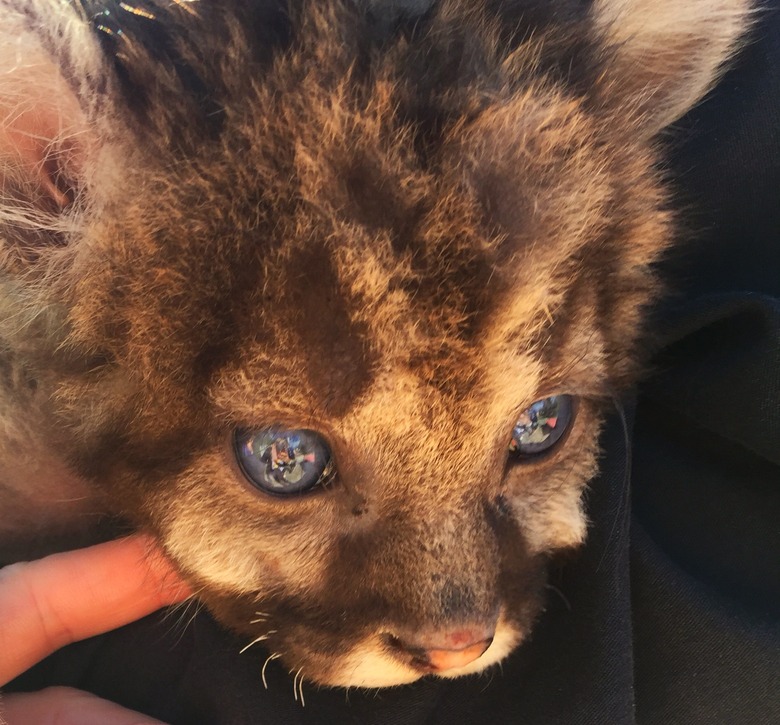Facts On Baby Cougars
Cougars – commonly also called mountain lions and pumas – are the second-biggest cat in the Americas after the jaguar. They are, by a wide margin, the most widely distributed, found from northwestern Canada south to Patagonia.
Sometimes weighing more than 200 pounds, these lithe, long-tailed felines are formidable hunters of everything from small mammals to ungulates (hoofed mammals) the size of bull elk and even moose, and they show amazing adaptability, occupying a great diversity of habitats and even thriving in the margins of significant human development.
Cubs – as mountain lion babies are called – rely on the hunting prowess of their mother and their ability to either keep out of sight or flee from potential predators to survive.
Timing of Cougar Litters: The Birth Pulse
Timing of Cougar Litters: The
Birth Pulse
Female cougars can and do breed and give birth year round – they're polyestrous, in other words – but in many parts of their enormous range they seem to favor certain times of year for raising litters.
These so-called "birth pulses" – which are likely more common in higher-latitude, more seasonal climates in both the Northern and Southern Hemispheres, and which in western North America generally fall from May through October – seem to be at least loosely tied to the timing of birth among major cougar prey.
The connection, though, may not always be a direct overlap between cougar and prey birthing. In much of North America, deer and elk serve as the main prey of cougars.
Newborn deer fawns and elk calves go through an initial "hider" phase in which they mostly lie concealed in undergrowth, camouflaged by their spots and all-around stillness. Once they're strong and fast enough, they begin traveling with their mothers, and their greater visibility probably makes them more vulnerable to cougars than during that hiding phase.
A study in the Black Hills in South Dakota that revealed a general birth pulse among cougars between June and August also showed that cubs born more than 30 days after the peak of births among local ungulates were larger than those born earlier, suggesting they were benefiting from richer hunting for their mother and thus more food.
Baby Cougar Litters
Baby Cougar Litters
A female cougar usually gives birth to three or four cubs after a gestation period of 90 or so days, though smaller and larger litters are possible.
The early life of a baby cougar, which is born blind, deaf and almost immobile, is spent in a protected nursery lair, which may be among boulders, in a cliff-face alcove, among heavy thickets or some other tucked-away, secluded refuge.
Cub Appearance and Development
Cub Appearance and Development
Mountain lion cub size at birth is on the order of about 500 grams or so – pipsqueaks, basically.
These tiny cubs are born with heavy spotting: a coat pattern that's lost with maturity, as adult mountain lions are basically uniformly tawny in color. More pronounced coat markings are common among the young of other cats, too, including African and Asian lions that, like the cougar, are solid-colored when full-grown.
That spotting helps the cubs better blend in amid vegetation. When cougar cubs open their eyes – which happens within the first couple of weeks – they're blue; after several months, that eye color changes to the brownish or grayish hue of adult cougars.
Wrestling matches and other play with their litter-mates helps them strengthen muscles and fine-tune the hunting skills that'll serve them as full-grown pumas.
When they're between about six to eight months old, cougar cubs start following their mother to kills. At this point they're also adept at tree-climbing. Between one and two years old, the partly grown cubs usually declare their independence from their mother and establish their own territories: usually close to mom's in the case of female cougars, farther away – sometimes much farther away, as in hundreds of miles – for males.
Cub Mortality
Cub Mortality
Cougar cubs are at risk from a variety of potential predators across their range, from birds of prey such as golden eagles to fellow carnivores such as bears, gray wolves, jaguars and coyotes. In many areas, though, research suggests the chief threat to young cougars is other mountain lions, particularly adult males.
Cubs are probably most vulnerable after they've left their birthing lairs and are out and about with their mother, though at that point their ability to claw their way up trees gives them at least something of a safety net.
Cite This Article
MLA
Shaw, Ethan. "Facts On Baby Cougars" sciencing.com, https://www.sciencing.com/baby-cougars-8582162/. 22 November 2019.
APA
Shaw, Ethan. (2019, November 22). Facts On Baby Cougars. sciencing.com. Retrieved from https://www.sciencing.com/baby-cougars-8582162/
Chicago
Shaw, Ethan. Facts On Baby Cougars last modified March 24, 2022. https://www.sciencing.com/baby-cougars-8582162/
